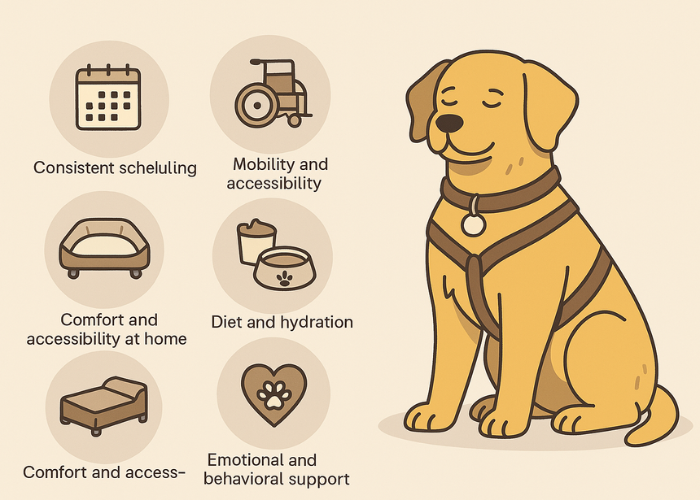The bond between children and dogs is one of the most heartwarming and impactful relationships in a child’s development. More than just playmates, dogs serve as emotional supporters, social facilitators, and even contributors to a healthier and more active lifestyle. Scientific research and family stories around the world confirm what many pet owners intuitively know—growing up with a dog can deeply enrich a child’s life on multiple levels.
In this article, we’ll explore the emotional, social, cognitive, physical, and psychological benefits of the child-dog relationship, and offer guidance for fostering a safe and rewarding connection.
1. Emotional Benefits
Emotional Support and Stress Relief
Dogs are natural emotional anchors. For children facing stressful situations—such as starting school, parental divorce, or welcoming a new sibling—the presence of a dog provides emotional comfort and stability. Petting a dog can lower cortisol levels (the stress hormone) and increase oxytocin (the “love hormone”), promoting relaxation and emotional security.
Developing Empathy and Compassion
Caring for a dog helps children recognize the needs and feelings of another living being. They learn to identify signs of hunger, discomfort, or fatigue in their pets, which builds emotional awareness and empathy—key traits for healthy relationships throughout life.
Boosting Confidence and Self-Esteem
Taking responsibility for feeding, grooming, or training a dog gives children a sense of accomplishment and self-worth. These daily interactions reinforce their ability to perform meaningful tasks and make positive decisions.
2. Social Benefits
Natural Social Bridges
Dogs are excellent conversation starters. Children walking or playing with a dog often attract the attention of other kids or adults, creating organic opportunities for interaction and friendship.
Encouraging Teamwork in Families
In households with multiple children, sharing the responsibilities of dog care fosters teamwork. Siblings learn to coordinate, divide tasks, and solve small conflicts—important life skills that translate into other areas of development.
Reducing Aggressive or Antisocial Behavior
Studies show that children who grow up with dogs are less likely to display aggressive or antisocial behavior. Living with a pet nurtures kindness, patience, and respect, while reducing feelings of loneliness or isolation.
3. Cognitive Benefits
Curiosity and Learning Through Observation
Dogs naturally stimulate a child’s curiosity. Kids ask questions about their pet’s behavior, learn basic biology, and even improve their reading skills by reading stories aloud to the dog in a judgment-free environment.
Problem-Solving and Critical Thinking
Training a dog or figuring out how to retrieve a lost toy enhances a child’s critical thinking and problem-solving abilities. These interactions provide real-world learning experiences in a fun, engaging way.
Language Development and Communication
For children with speech or language delays, talking to a dog can provide a low-pressure way to practice verbal communication. Dogs listen without judgment, which builds the child’s confidence and comfort in expressing themselves.
4. Physical Benefits
Encouraging an Active Lifestyle
Dogs need exercise, and so do children. Walks, games of fetch, or backyard play sessions encourage physical activity, helping kids stay fit and develop muscle coordination while reducing the risk of childhood obesity.
Strengthening the Immune System
Exposure to the natural microbes carried by dogs can help children develop stronger immune systems. Research shows that kids raised around dogs are less likely to develop allergies or asthma.
Improved Motor Skills
Activities like brushing a dog, throwing a ball, or attaching a leash enhance both fine and gross motor skills. These tasks support physical coordination and hand-eye development.
5. Psychological Benefits
Easing Anxiety and Promoting Calm
Dogs provide a grounding presence for children dealing with anxiety, fear, or emotional challenges. Their unconditional love and calm demeanor can help soothe children during tough moments.
Establishing Healthy Routines
Caring for a dog introduces structure to a child’s day. Feeding times, walks, and grooming rituals reinforce the importance of routine, discipline, and time management from a young age.
Comfort During Difficult Times
Whether dealing with the loss of a loved one or facing academic struggles, the companionship of a dog offers emotional support and comfort. Dogs listen without judging and help children process feelings they may not be ready to share with others.
6. Tips for a Safe and Healthy Relationship Between Kids and Dogs
To ensure a positive experience, parents and caregivers should take certain precautions:
- Choose the Right Dog: Some breeds are more suitable for children. Golden Retrievers, Labradors, and Beagles are known for their gentle nature and patience.
- Always Supervise Interactions: Especially with younger children, supervision helps prevent accidents and teaches respectful behavior.
- Teach Respect: Show children how to approach a dog calmly, avoid disturbing it while sleeping or eating, and never pull ears or tails.
- Train the Dog: A well-trained dog is more likely to respond calmly to a child’s energy and unpredictable behavior.
- Maintain Hygiene: Encourage regular hand washing and keep up with the dog’s vaccinations and deworming to prevent health risks.
Conclusion
Growing up with a dog is much more than just fun—it can shape a child’s personality, boost mental and physical health, and create lasting memories. Dogs are not just pets; they become trusted companions, emotional guides, and partners in play and learning.
By creating a nurturing and respectful environment, parents can unlock the full potential of this powerful relationship. Investing in the bond between a child and a dog is an investment in emotional intelligence, resilience, health, and joy.
Frequently Asked Questions (FAQs)
1. What is the best age for a child to have a dog?
There’s no universal answer, but early childhood can be a great time—as long as adults are actively supervising and involved.
2. Are all dog breeds good with children?
Not necessarily. Some breeds are better suited for families. Look for dogs known for being gentle, tolerant, and friendly.
3. Can a child with allergies have a dog?
Possibly. Some hypoallergenic breeds like Poodles or Portuguese Water Dogs may be better options. Consult an allergist before making a decision.
4. How do I teach my child to respect our dog?
Lead by example. Demonstrate gentle petting, respectful boundaries, and explain that dogs have feelings and need personal space too.
5. What if my dog shows discomfort around children?
Pause interactions immediately. Consult a professional dog trainer or behaviorist to assess and correct the issue safely.



